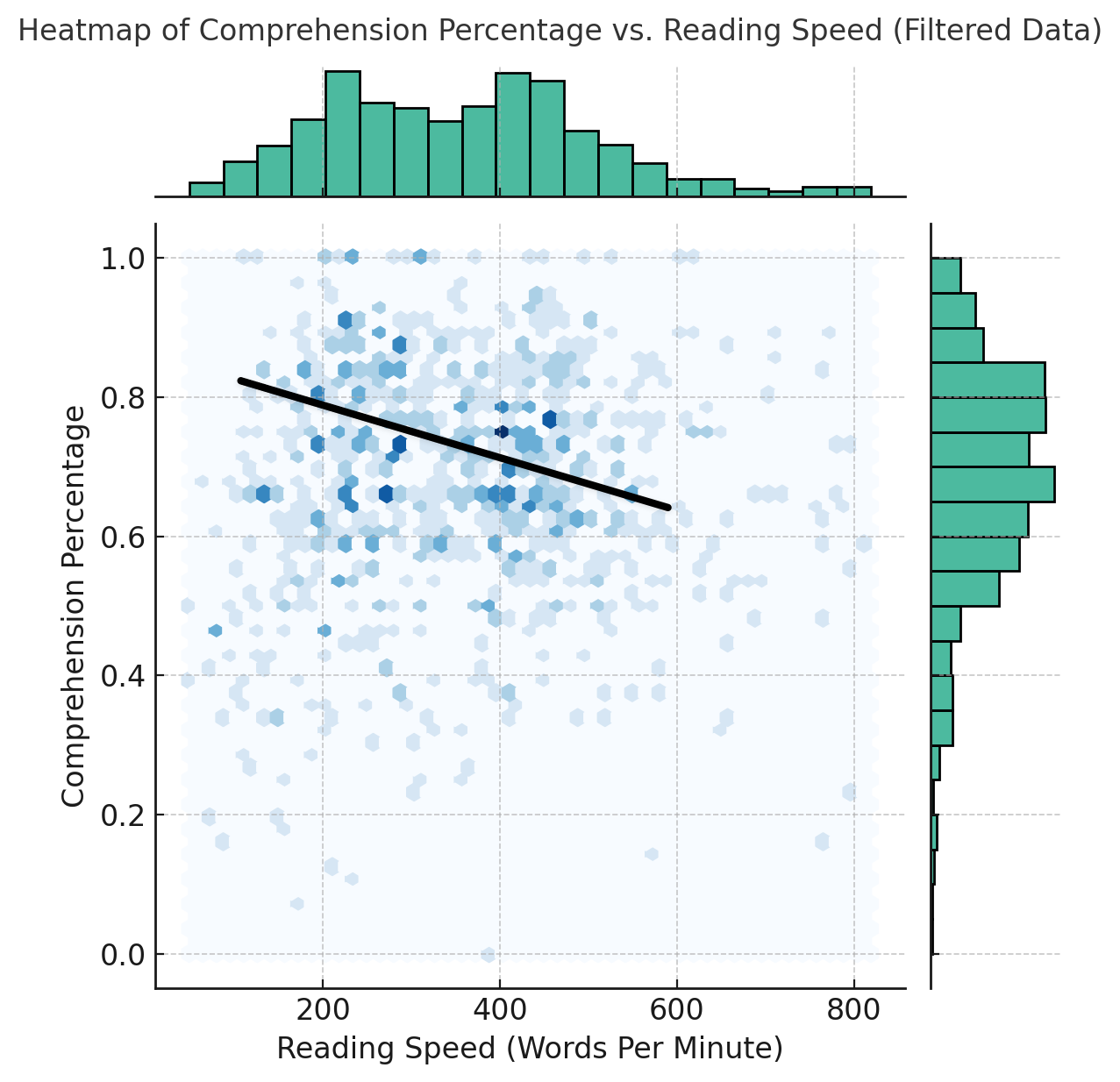How to Calculate and Measure Your Reading Speed


Table of Contents
Ever wondered how fast you can read? More importantly, ever wondered how much you really understand from what you read? In this post, we dive into these questions. We'll not only discuss how you can measure your reading speed, but also how you can assess the quality of your comprehension. As you’ll soon learn, the concepts of reading speed and comprehension cannot be separated.
Reading speed is measured in words per minute (WPM)
Reading speed is most commonly measured in words read per minute (WPM). A simple way to estimate your reading speed is to do the following:
- Pick a page out of a book.
- Time how long it takes you to read the page.
- Estimate the number of words on the page. For example, you can count the number of words on average per line, and then multiply that by the number of lines on the page to get an estimate for the number of words on the page.
- Divide the number of words read by the number of minutes taken to read those words, to get your words per minute (WPM) reading speed. For example, let’s say it took you 2 minutes to read a page with 500 words. Your reading speed would be 500/2 = 200 WPM.
Seems easy right?
But reading well isn’t just about raw reading speed. You can read "fast", but comprehend little. After all, what does it mean to "read" something?
Reading speed in the context of comprehension
Reading something essentially means that you've understood the information that entered your brain. This leads us to the idea of always putting reading in the context of comprehension.
For example, say your reading speed on an average text is 250 WPM, and you comprehend 100% of it. But when you try to push yourself to read faster, you can read at a rate of up to 500 WPM but your comprehension drops to 50%. In general, reading faster usually (but not always) means a decrease in comprehension level. More information entering your brain faster means less time and space for your brain to digest that information.

The goals that you have for your reading determines what kind of comprehension level is sufficient. Reading something critical and complex that needs to be understood fully? You’re going to want to read it more slowly so that you can reach close to 100% comprehension. Reading some article with a lot of fluff (hopefully not this one!) that you just need to understand the main points of? You can read it more quickly because less than full comprehension is good enough.
Skilled readers can vary their reading speed
A skilled reader isn’t someone who can just read fast. A skilled reader is someone who can vary their reading speed depending on their reading goals. So for example, say you normally read at 250 WPM with 100% comprehension. If you’re reading a fluffy article that only requires 50% comprehension, you’ll know how to push your reading speed (to 350 WPM, 450 WPM, or beyond) but still maintain at least a 50% comprehension level to get what you want out of the article.
So, it’s not like you have “single” reading speed. Your reading speed will vary depending on what kind of text you’re reading. And if you’re a skilled reader, you’ll also be able to vary your reading speed depending on your comprehension goals.
Measure your baseline reading speed and comprehension
It’s often helpful to have a baseline measurement of your reading speed and comprehension levels so that you know where you stand. This means testing your reading speed and comprehension levels periodically on text that is consistent in its difficulty level. Then, as you measure your reading speed and comprehension over time, you will see increases in reading speed and/or comprehension as your reading skills improve.
Recommendation: we recommend measuring your baseline reading speed and comprehension on high-school or college-level English, which mirrors the kind of text that you'd encounter most in the real world, including newspapers, online articles, and popular non-fiction books.
How to measure reading comprehension
At this point, you might be asking “how do you even measure reading comprehension?” The full answer is the topic for another post. Simply put though, you can measure your comprehension of a reading passage by answering questions that test your understanding of that reading passage. The percentage of questions that you get correct is an estimate of your comprehension level for that passage.
Reading passages with reading comprehension questions can be hard to come by, unless you’re an English teacher. Here’s what you would have to do: grade yourself to calculate your reading comprehension, time yourself to calculate your reading speed, and do all of that over and over again so that you can measure your reading skill improvement over time. Sounds like a hassle!
In response, we created the largest database of reading tests. We also built a reading test tool that automatically measures your reading speed and comprehension levels, over time. Each reading passage is written at a high-school and college English level, so that you can measure your baseline on the most common type of text that you’ll encounter in the real world. All you need is an internet browser to take the tests. Each test only takes a few minutes, and you can take however many as you want, whenever you want. And we made all of this free! Take the reading tests here.
Read faster, maintain or even improve comprehension
We mentioned that faster reading speeds don’t always lead to a decrease in comprehension. In fact, in certain situations, like in this research study, you can push your reading speed and still maintain or even improve your comprehension level.
This is what I experienced: when reading articles, I used to read at about 250 WPM with good comprehension. But after learning reading techniques and using speed reading tools like SwiftRead (which I originally made for myself), I was able to read articles at about 500 WPM while maintaining a good level of comprehension.
To learn more about the fascinating phenomenon of increasing reading speed and comprehension at the same time, read our chapter about Does Speed Reading Work?
So, whether you're an avid reader wanting to improve your reading efficiency, a student trying to ace your exams, or someone just curious about their reading abilities, understanding your reading speed and comprehension can be an enlightening journey. After all, reading isn't a race, but a journey to enjoy and understand the worlds captured within the pages (or screens). With our guides and tools, you're well on your way to making the most of your reading adventures.
Measure your reading speed and comprehension with our free tool